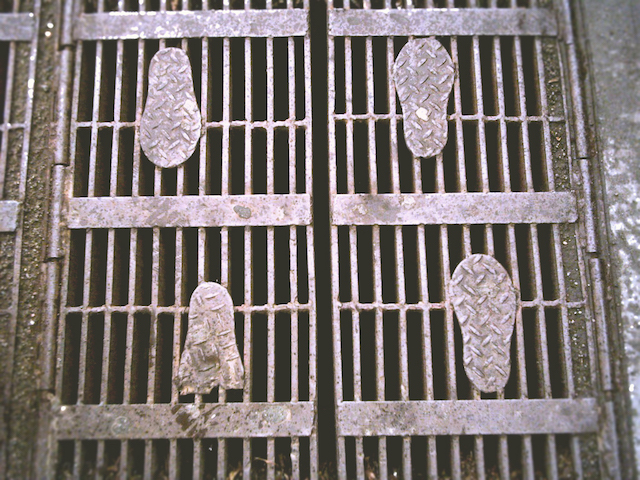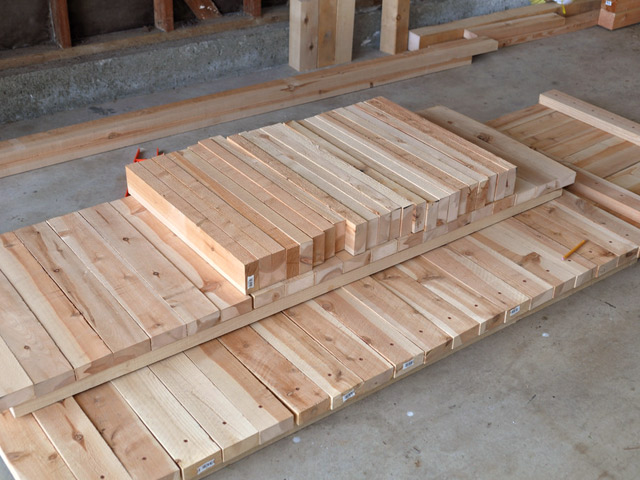Remembering family genealogies, the Asian American Movement, solidarity lines, and organizing for liberation.

August 27, 2016
Did you save a window for us this week? Get your timelines together because this weekend, we’re reassembling memory. Calling back to last week’s link roundup, start off with a critical assessment of Olympic histories, then follow up by going further into the Asian American Movement, lineages of organizing, and contemporary action for liberation. Move down for more to add onto your weekend list!
The Heinous Olympification of Seoul by Sukjong Hong
Former Open City Fellow Sukjong Hong traces the history of Olympification of cities — modern Olympics-related urban redevelopment initiatives involving construction booms, destruction, and mass displacement — to 1980s Seoul, featured in the New Republic.
In Rio … 75 percent of the Olympic Park will be turned over to private developers after the Games are done. The committee in charge of redevelopment was led by real estate scions, and unsurprisingly, the most apparent beneficiaries of the Games so far are the same industry players.
All these elements—and worse—were evident in the Seoul Olympic Games in 1988, which helped set the template for the modern “Olympification” of cities in the developing world. As we start to look toward the next Olympics—the 2018 Winter Games in Pyeongchang, South Korea—it’s worth looking back at the 1988 Summer Games to see what’s in store for other cities tempted to use the Olympics as a fast track to development.
Content warnings in the following piece for violence and blood.
Why I’m North Korean by Joseph Han
Recently also published in the Margins and now in Entropy magazine, Joseph Han assembles a fractured genealogy compiled from North and South Korean family lines.
I’m not related to my aunt by blood. But to be Korean means to know what it means to be cut. I wonder what her three children, my cousins, will do with these stories if she shares them. How they will identify as Korean. How they haven’t the way I haven’t, until I decided I wanted to write. I wrote fiction to get closer to what was real for many, and it took so long for me to realize that I wasn’t very far. My aunt’s family’s story is another family’s story is Korea’s story. Viet Thanh Nguyen once tweeted: "Many immigrants in USA because of American wars: Philippines, Korea, Vietnam, Cambodia, Laos. That’s why immigrant stories are war stories."
Sea of Memory by Nam Nguyen
In this interview-style short documentary, father and son Nam and Ryan Nguyen brings together personal documents and oral histories of Nam Nguyen’s migration as a 12-year-old Vietnamese refugee in 1979.
New Voices in Vietnamese American Literature: A Conversation with Viet Thanh Nguyen, Andrew Lam, and Aimee Phan by Aimee Phan
Aimee Phan discusses Vietnamese writing diasporas, grappling with relationships to Vietnam and the U.S., and what Vietnamese American writers and artists are doing now.
Diasporic Vietnamese writing has grown during the same period I have, and we are now seeing more younger writers, as well as writers our own age or thereabouts, who are not writing about the war. Bich Minh Nguyen, Vi Khi Nao, Phong Nguyen, Dao Strom. Of course, some are still writing about the war and its legacies, but in new forms like the graphic novel—GB Tran, Thi Bui—or genres, like Vu Tran and the detective novel, or Dao and experimental mixed genres. Or getting big acclaim, like Ocean Vuong in poetry. It’s really a growth field that does and doesn’t adhere to the history of the war. It’s not predictable in some ways, and that’s good.
A Poet Subverts the Defense Department’s Official Dictionary by Natalie Diaz
For the New York Times, Natalie Diaz dissects the use of language and lexicography in Solmaz Sharif’s debut poetry collection "Look". (Alongside Miriam Ghani, Cathy Park Hong, and Rickey Laurentiis, we recently celebrated the release of "Look" at the Workshop! Revisit the event with #WordsonTerror.)
According to the military dictionary, a "look" is "a period during which a mine circuit is receptive of an influence" — the word "influence" in this case a way to avoid the word "person." Across Sharif’s pages, other terms like "battlefield illumination," "dolly," "hung weapon," "penetration aids" and "act of mercy" are skillfully repurposed in narratives and lists, with the dual capacity for violence and tenderness. This is not simply a war language; this is an American language. In Sharif’s rendering, "Look" is at once a command to see and to grieve the people these words describe — and also a means of implicating the reader in the violence delivered upon those people.
Snapshots of Asian America: A Look at the Movement’s Spirit and Legacy by the Asian American Movement Project (AAMP)
Hosted by KQED, 2002 interactive site Snapshots of Asian America commemorates the history of 1960s and ’70s Asian American activism.
Snapshots of Asian America: A Look at the Movement’s Spirit and Legacy examines the rich, little-known history of Asian American social activism during the late 1960s and 1970s. The content of these KQED-hosted pages have been drawn mainly from Asian Americans: The Movement and the Moment, a first-of-its-kind anthology of 25 personal narratives, and 433 photographs and illustrations produced during the Movement itself.
When Asian America was a Movement by Karen Ishizuka
On AAWW sister organization CultureStrike, Michelle Chen and Karen Ishuzuka discuss Ishuzuka’s Serve the People, a history of the Asian American movement’s inception and impact.
I took advice from Paulo Freire: “Discovery cannot be purely intellectual but must also involve action; nor can it be limited to mere activism, but must include serious reflection.” Rather than a history of the AAM [Asian American Movement] per se, I focused on the making of Asian America and presented the story in three acts, not that there is a strict linear progression from one to the other. Act I: “American Chop Suey” is on Discovery –why and how Asian America came to be, with chapters on “Growing Up Alien in America” and “Living in B&W.” Act II: “Once in a Movement” is on Activism—various spheres of activism in anti-war, community building, arts, etc. Act III: “Finding Our Truth” is on Reflection—self-appraisals and evaluations. (I took the title from Tom Hayden who said, “If the sixties are not over, it is up to the sixties generation to continue to find our truth.”) This three-act structure of Discovery, Activism and Reflection allowed me to encompass, but not be restricted by, chronology, geography or sociology.
Why Solidarity Between the Movement for Black Lives and Palestine Makes Sense by David Palumbo-Liu
David Palumbo-Liu outlines historic points of convergence and rejects equivalence between Palestinian and Black liberation movements for Truthout.
The conjunction of Black activist, Jewish and Palestinian struggle has a long and critical history, as documented thoroughly in Keith Feldman’s essential book, A Shadow over Palestine: The Imperial Life of Race in America. Feldman notes that between roughly 1960 and 1985: "Struggles over hegemony in the United States became entangled with transformed relations of rule in Israel and Palestine, that is, when US civil rights and antiwar struggles, Zionist settler colonization and Israeli military and administrative occupation, and Palestinian narratives of dispossession, dispersion, and resistance were forged, felt, and thought together."
As we follow the developments of these debates over the flexibility, or rigidity of language and consequently solidarity, we should be mindful of this legacy.
"Defiant, Disobedient, and Verbally Threatening" by Neal Shirley
To prepare for a national prison strike planned to begin on September 9th, Neal Shirley in Mask Magazine pulls together the most prominent nodes of this strike’s organization, including the 45th anniversary of Attica, resistance at Nebraska State Penitentiary, and #FreedomSquare (Chicago) and #AbolitionSquare (NYC) occupations.
A nationally coordinated prisoner worker strike on the 45th anniversary of Attica is less than a month away, and there’s barely enough time and space to digest all the news. Amidst the absurdity, inanity, and spectacle of the elections – by the way, can one of Trump’s “second amendment-types” just deal with both of these clowns so we don’t have to listen to their shit anymore? – is a serious uptick in organizing and tactical innovation against prisons and policing. Here is some of the relevant news on prison resistance from both sides of the wall.
Content warnings in the following piece for ableist language in title and antiblack slurs in piece.
Abolish the police? Organizers say it’s less crazy than it sounds. by Maya Dukmasova
Featuring Jessica Disu and Mariame Kaba in one of the first cover stories in a major city news outlet on police abolition, Maya Dukmasova’s Chicago Reader piece documents Chicagoan Black communities’ configurations and approaches to community support and transformative justice.
Though Black Lives Matter and other groups have been vocally campaigning for police reform since 2014, the tone (and the banners) of demonstrations in Chicago this summer have become explicitly abolitionist.
…
It seems the city finds itself at the epicenter of a growing movement imagining and building a world without cops. And some grassroots groups, tired of waiting for top-down change from the very agencies they protest, have taken it upon themselves to start building the abolitionist society they want to live in.



